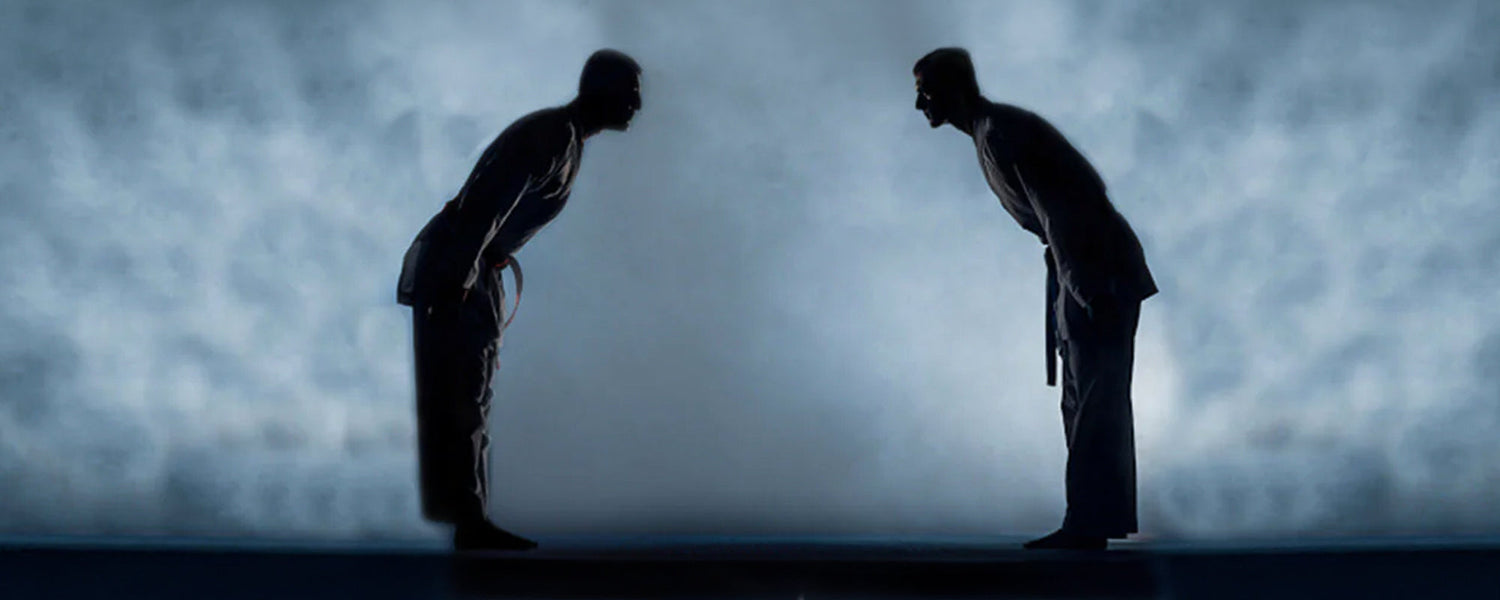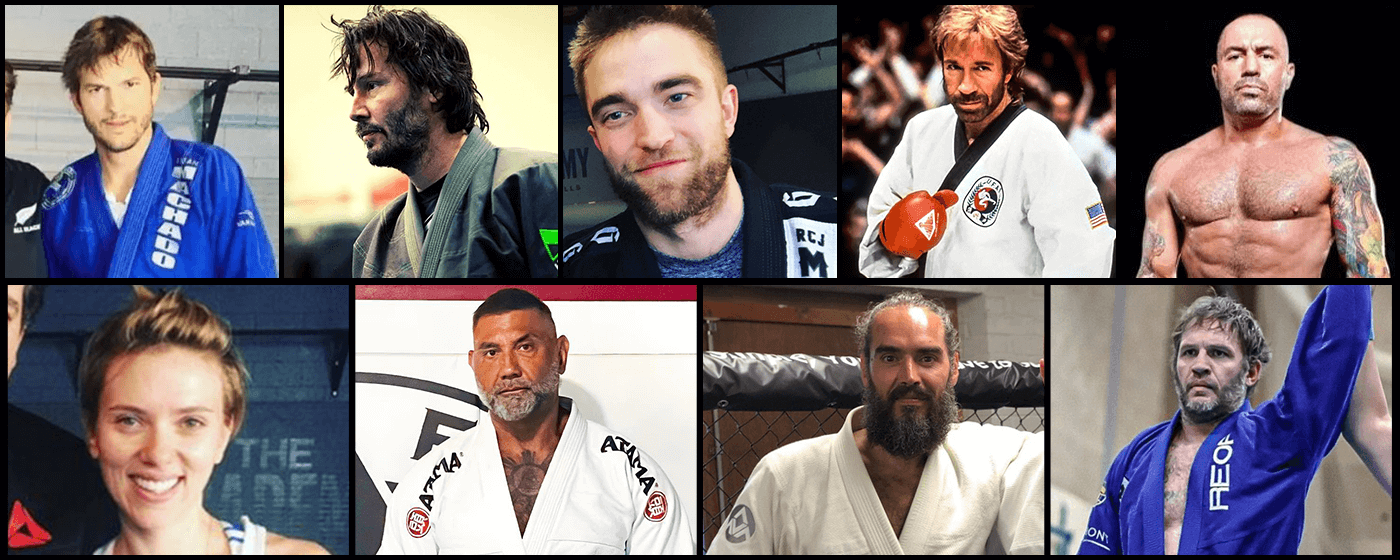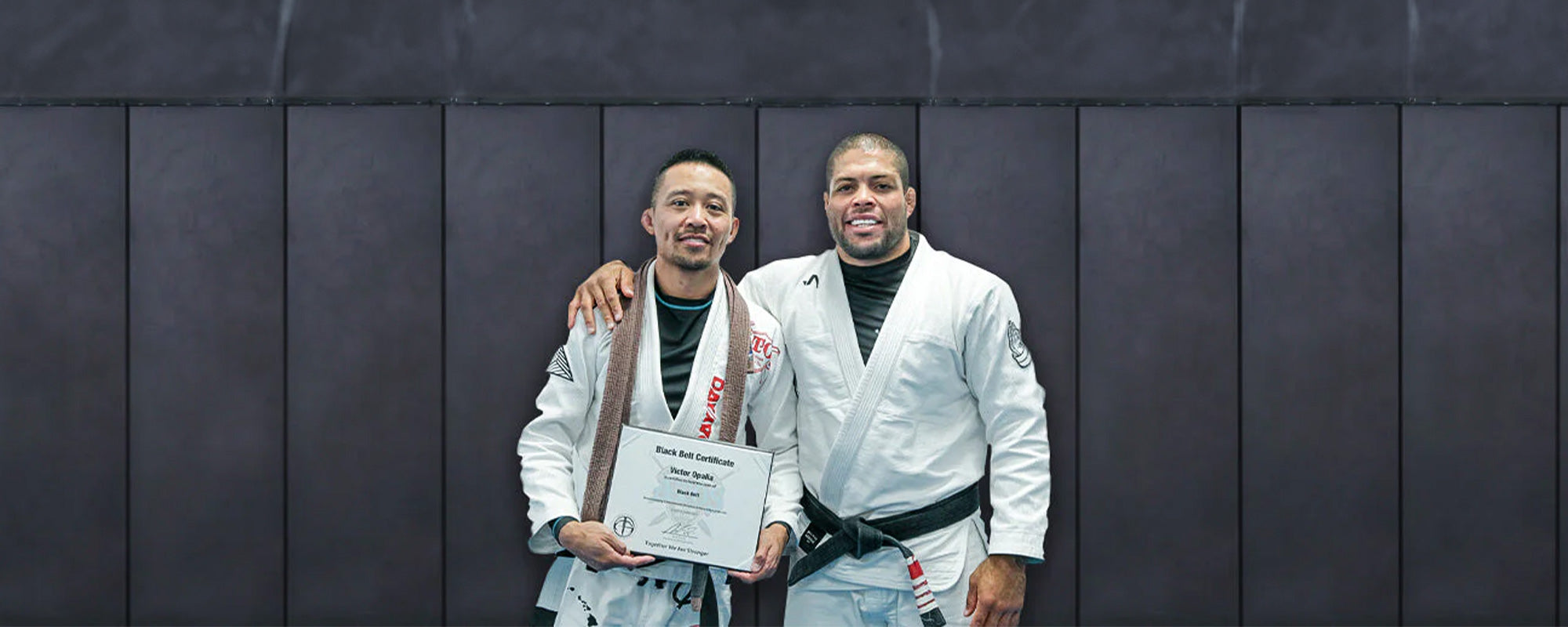Table of content
“Concepts are far more powerful than BJJ techniques,”
Brazilian Jiu-Jitsu is a martial art with combat-proven strategies and techniques suitable for both on and off the mat. Because BJJ strategies stem from this martial arts’ core concepts, BJJ concepts and techniques are connected. Over the years, some practitioners have become more focused on learning techniques, while others believe that learning a particular concept will help refine grappling skills.
1. What is the Difference Between a BJJ Concept and a BJJ Technique?
1.1. BJJ Technique
Traditional Brazilian Jiu-Jitsu is a ground-based fighting style. In BJJ, a combatant has to get the opponent to the ground, dominate him/her, and then force him/her to tap out using a submission technique. Examples of BJJ techniques are the armbar and rear-naked choke.
1.2. BJJ Concept
A BJJ concept is the fundamental principle behind a BJJ technique. It is a deep understanding of how a BJJ technique works, why it works the way it does, and in which situation it would work best. If a technique fails, it is because some core principle or concept was being overlooked.
Here is a quick example: If you find yourself being attacked from the back, you can immediately apply the scoop technique to escape the disadvantageous position. However, to successfully perform this technique, it is important to understand this basic concept:
- Keep your elbow hidden and arms close to the body to eliminate angles and openings that your opponent can take advantage of to dominate and apply submission chokes.
- Adopting a side posture while doing a scoop can give your opponent more leverage to secure a submission.
- Trying to pull your opponent by doing a shoulder throw will leave you vulnerable to attacks.
2. BJJ Techniques VS Concepts - Which Is More Crucial for Success?

BJJ concepts are important, but usually, in BJJ academies, techniques tend to come first. Students find it easier first to learn a bunch of techniques and then learn the concepts behind those techniques. Hence, for newer BJJ practitioners, Brazilian Jiu-Jitsu is a grappling sport with many positions and moves to master. They learn many basic and advanced techniques from their instructors, spending years trying to perfect them. However, they often find themselves at a disadvantage in a competitive setting due to these techniques failing!
There are two factors that can explain this phenomenon.
- The technique is not compatible with their body type.
- The opponent is more experienced and has a better understanding of the concepts behind BJJ techniques.
In a post by BJJ Eastern European, Kit Dale, an accomplished Australian BJJ black belt, explained that learning techniques can make you a powerful grappler. However, BJJ techniques have limitations as they apply only in specific positions and situations. On the other hand, learning a concept offers greater flexibility when executing techniques and transitioning between moves.
Perhaps that is the reason why every elite BJJ athlete has his/her unique version of a fundamental BJJ technique, established a unique system of BJJ techniques, and can easily identify seemingly different techniques as variations of a single concept.
To make progress in jiu-jitsu, you don’t need to become an encyclopedia of techniques. All you need is a plausible and consistent approach to BJJ concepts.
This point is emphasized in the book, Brazilian Jiu-Jitsu: Theory & Technique by Renzo & Royler Gracie, Kid Peligro, and John Danaher.
“It cannot be emphasized strongly enough that the key to success is mastery of the fundamentals - this is true at any level of Brazilian Jiu-Jitsu.”
3. The Advantages of Learning BJJ Concepts
Understanding BJJ concepts can help you get to the roots of the martial art.
Nicolas Gregoriades, BJJ black belt and author of The Black Belt Blueprint summed it up eloquently in an interview with Jiu-Jitsu Times,
“There are an infinite number of technical situations in jiu-jitsu, and new ones are being developed all the time. You will never be able to learn every single attack, defense, counter, and combination. There will always be loopholes in the game. Conceptual understanding fills in the gaps in your technical knowledge. It allows you to create your own movements and adapt quickly when you do not have a technical response to a particular circumstance.”
3.1. A Unique Game Strategy
Though developing an understanding of BJJ concepts is important, it should not be an excuse to stop learning new BJJ techniques. But no matter how many techniques you learn, you are more likely to rely on your “go-to” techniques during matches. If you are unaware of the underlying concept that supports your technique, your strategies will become predictable.
Accomplished BJJ black belts have unique strategies. They don’t necessarily utilize new techniques every time, but if they change up their approach to their favorite techniques, the unpredictability will help keep opponents guessing. Hence, learning BJJ concepts will help you figure out how to improve your game.
A great example would be the Twister technique. Eddie Bravo modified the wrestler’s guillotine technique and created an effective BJJ submission based on this concept.
3.2. Addition of Different Techniques
Many BJJ techniques share a common concept. If you learn a single technique and can grasp the concept behind it, it will be easier to understand other techniques stemming from the same concept. This will bring variety to your BJJ strategy.
For example, if you learn the armbar technique and can understand the concept of posture, grips, and levers behind the armbar, then you can easily execute variations of the armbar technique, including the flying armbar, inverted armbar, reverse armbar, straight armbar, etc.
3.3. Identify New Techniques
BJJ has evolved significantly over the years. With the UFC pitting different martial arts against each other, new techniques are being created all the time. The growing popularity of No-Gi BJJhas also given rise to new BJJ techniques. To be able to perform well in professional tournaments, you have to be prepared for anything, analyze new techniques, and come up with a reliable defense.
3.4. Ability to Analyze & Instruct
As you make progress in BJJ, you will slowly climb up the belt rank system. If you are apurple belt or higher, you are expected to teach BJJ practitioners at lower belt ranks. Therefore, to help your juniors improve, it is necessary for you to analyze and explain why certain techniques are not working for them. This is only possible if you fully understand BJJ concepts and identify which principles they need to work on.
This mindset will help you when training as a brown belt as well. At this stage, you are required to come up with a unique system that makes use of multiple BJJ techniques. You will only succeed if you know which BJJ concepts work well together and formulate a system based on that information.
3.5. Key to Technical Progress
The ultimate goal of every BJJ practitioner is to refine their skills to a point that the instructor deems them worthy to receive a black belt. The journey to becoming a black belt takes at least 10 years and requires unwavering resolve. To achieve a black belt more quickly, it is important to master some key techniques such as positional variations and transitions, submissions, escapes, and survival postures. This mastery is only possible if you know howand whyBJJ techniques work. Hence, learning BJJ concepts is crucial to your promotion to black belt.
4. Important BJJ Concepts You Should Know
Just like there is an endless list of BJJ techniques, there is a long list of BJJ concepts you need to learn. However, we have only included the most important BJJ concepts in the list provided below.
4.1. Reaction Time
There is a famous BJJ maxim that all aficionados swear by:
“if you think, you are late. If you are late, you use strength. If you use strength, you tire. If you tire, you die.”
One of the principal concepts of BJJ is quick reaction time. As soon as your opponent attacks, your body should be able to recall which moves to perform in response to a certain situation. Some BJJ elites refer to this kind of reaction as muscle memory.
Example: When your opponent tries to pass your guard, you usually don’t have time to think. Victory or defeat will depend on how quickly you can react.
Unfortunately, you cannot apply the “no thinking” concept all the time. You may find yourself in a disadvantageous position where an instinctive reaction can be fatal.
Imagine you are on your hands and knees with your opponent attacking from the back. Your first instinct would be to try to push up to try and avoid being pinned to the mat, moving toward your opponent who is already putting pressure on your back. This incorrect reaction would result in your opponent gaining better control and having more opportunities to subdue you.
Therefore, it is important to identify the right moment to react instinctively or formulate a strategy.
4.2. The BJJ Weight Distribution Concept
Weight distribution is another important concept in BJJ. Weight distribution is how well a BJJ athlete can exert heavier pressure on the opponent, even if both fighters are of the same weight class.
This concept comes in handy when you cannot rely on speedy transitions and quick submissions. Your weight can be a powerful weapon in your BJJ arsenal, allowing you to dominate your opponent by exerting extra pressure. With your opponent subdued, you have enough time to attack and can create openings to pull of submissions.
Examples:
- A double underhook pass.
- Pinning your opponent.
- Controlling your opponent’s movements to secure a submission.
- Performing head and arm control, putting all your body weight into your shoulder to keep your opponent from escaping.
4.3. Waiting for the Attack
BJJ is a form of self-defense based on numerous concepts related to combat. One such concept involves waiting for the opponent to strike first. This concept is helpful for athletes who find themselves stuck in a disadvantageous position.
Example: If your opponent has attacked you from behind, you can anticipate a chokehold or a similar technique. The situation can be remedied by relying on hand-to-hand techniques. In this, you need to keep your hands relaxed and use them to fend off strikes and chokes. But if you try to strike first while your opponent is out of reach, you are exposing your neck, arms, and elbows. Knowing when to attack and defend by staying relaxed is an important concept that should not be ignored.
4.4. The Position/Submission Combination
Early in Brazilian Jiu-Jitsu training, the idea of performing submission techniques to force an opponent to tap out can sound exciting. But to make this dream a reality, it is important to not just learn BJJ techniques, but also to understand the most suitable positions to perform certain techniques.
Example: It is common for BJJ fighters to transition from a side control position to a mount when performing an armbar submission. On the other hand, performing this technique from an open guard may not be the best strategy. This is because the side control position does not offer enough room to maneuver or pull off a submission while in an open or closed guard. The opponent might see an opening and attempt a reversal or a sweep to try and subdue you.
4.5. Knowing When to Transition
To maintain an advantageous position, you have constantly keep moving to keep your opponent from gaining control. But the key here is to know when a seemingly advantageous position is no longer favorable.
Through this BJJ concept, most athletes learn how to maintain and regain control even after losing their position.
Example: Pushing an opponent of the side control position to regain the guard position.
Transitioning from the side control position to the kesa gatame to counter a hip escape.
Transitioning from the side control position to a mount to execute a submission technique.
5. Verdict
BJJ techniques and concepts are both strong pillars of BJJ that tend to overlap a lot. The best way to learn BJJ is to start with a few basic techniques or moves, then develop greater comprehension of concepts.
As stated by Kit Dale.
“Learn the BJJ techniques in detail and then use trial and error to see what works for you. Then, remove the rest.”












Leave a comment
This site is protected by hCaptcha and the hCaptcha Privacy Policy and Terms of Service apply.